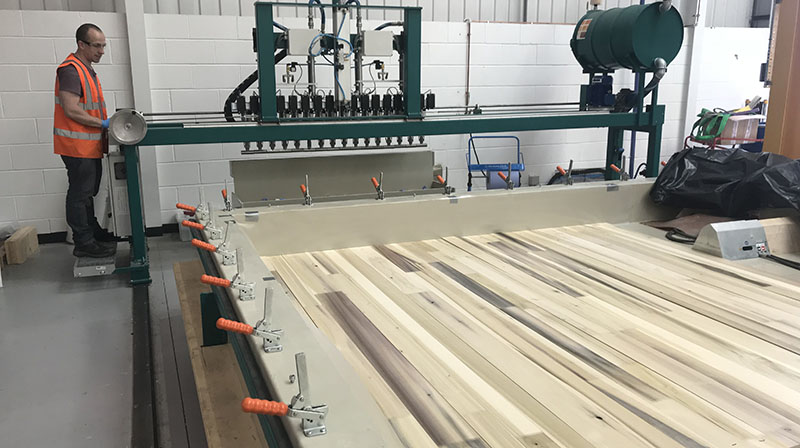
CONSTRUCTION Scotland Innovation Centre (CSIC) has the produced a hardwood cross-laminated timber, which will be used to construct the London Design Festival pavilion.
The timber, which CSIC has described as the “UK’s first ever”, is to be used to construct the flagship pavilion of the London Design Festival in the Sackler courtyard of the V&A.
The 9-metre high pavilion, named MultiPly, is a collaborative effort between Waugh Thistleton Architects, the American Hardwood Export Council (AHEC) and engineering firm Arup, with support from CSIC, Glenalmond Timber Company and the Centre for Offsite Construction & Innovative Structures at Edinburgh Napier University.
Cross-laminated timber (CLT) is an engineered timber that can be used to build walls and floors. With its layered construction – with the wood turned at right angles in each successive layer – it is, weight for weight, stronger than steel or concrete, CSIC explained.
It is also equally strong in both directions, making it the “ideal” material for prefabrication and rapid assembly. CLT can reduce construction times by around 30%, the CSIC claims.
CLT is usually made of softwood, but AHEC and Arup have been experimenting with CLT made from fast-grown North American tulipwood for the past ten years, with testing reported to show that the tulipwood is offers greater strength and performance than spruce.
The MultiPly pavilion will consist of 102 CLT panels, which will be used to make 17 modules to be connected together with digitally fabricated joints. It will arrive on site a kit of parts, and be assembled in under a week.
The pavilion will open on 15 September.
Mark Milne, technical manager at the CSIC said, “AHEC approached us to manufacture the CLT for the MultiPly pavilion because, in our Innovation Factory which opened last year, we have the only CLT vacuum press in the UK. Previously AHEC has had to go to the likes of Austria or Germany for their CLT, so they were really pleased to be able to keep this project within the UK.
“MultiPly is a pioneering project for the Scottish organisations involved, firstly because nobody in the UK has made CLT with hardwood before, and as far as we are aware, this is the largest quantity of CLT that has ever been produced in this country. Most CLT that has previously been manufactured in the UK is in small quantities for research projects, with larger amounts used for building generally having to be imported. It’s great that Scotland now has the capability and flexibility at our Innovation Factory to produce CLT in larger quantities for innovative collaboration projects such as this one.”
He added, “With so many project partners involved, MultiPly is a great example of what can be achieved when industry and academia come together, which is what CSIC is all about. We’d also like to recognise the great facilitation work by Peter Wilson of Timber Design Initiatives, who made the initial introductions that led to the realisation of this project.”
David Venables, AHEC’s European director commented, “To be able to produce the first significant volume of CLT panels ever produced in the UK and for them to be in hardwood is a thrilling achievement, and another landmark in our journey to highlight the valuable role American hardwoods can play as premium products for timber construction.
“CSIC, working closely with Glenalmond Timber, who have prepared and structurally finger-jointed all the lumber, have made this project possible and their collaborative effort is helping us understand and fine-tune the production process.
“In addition, an extensive testing programme with COCIS at Edinburgh Napier University will ensure we have the necessary data to convince industry that tulipwood CLT is a viable option. The panels look absolutely amazing and we are eagerly awaiting the construction phase now being undertaken by Stage One, and can’t wait to see this ambitious structure take up residency at the V&A.”







